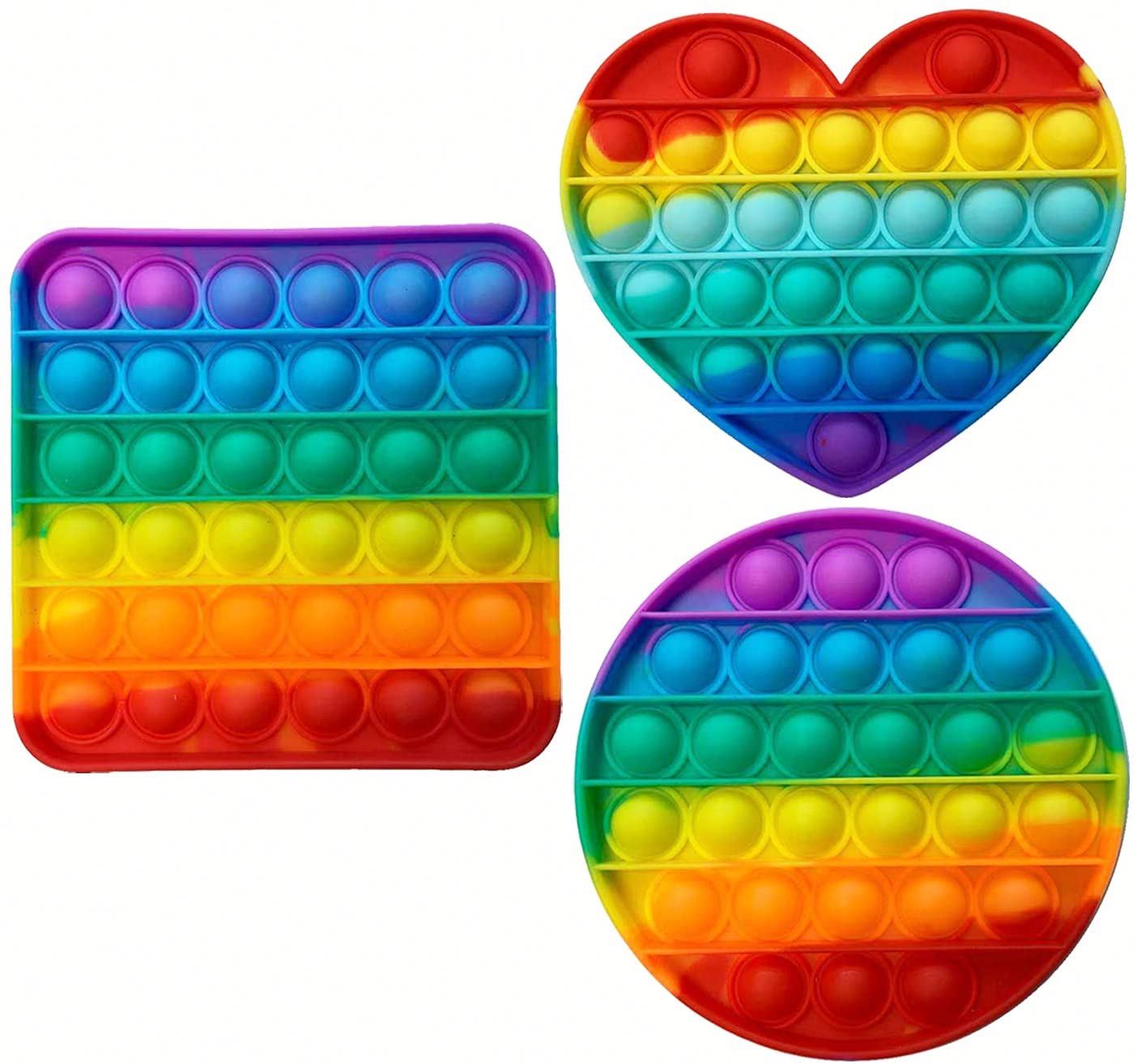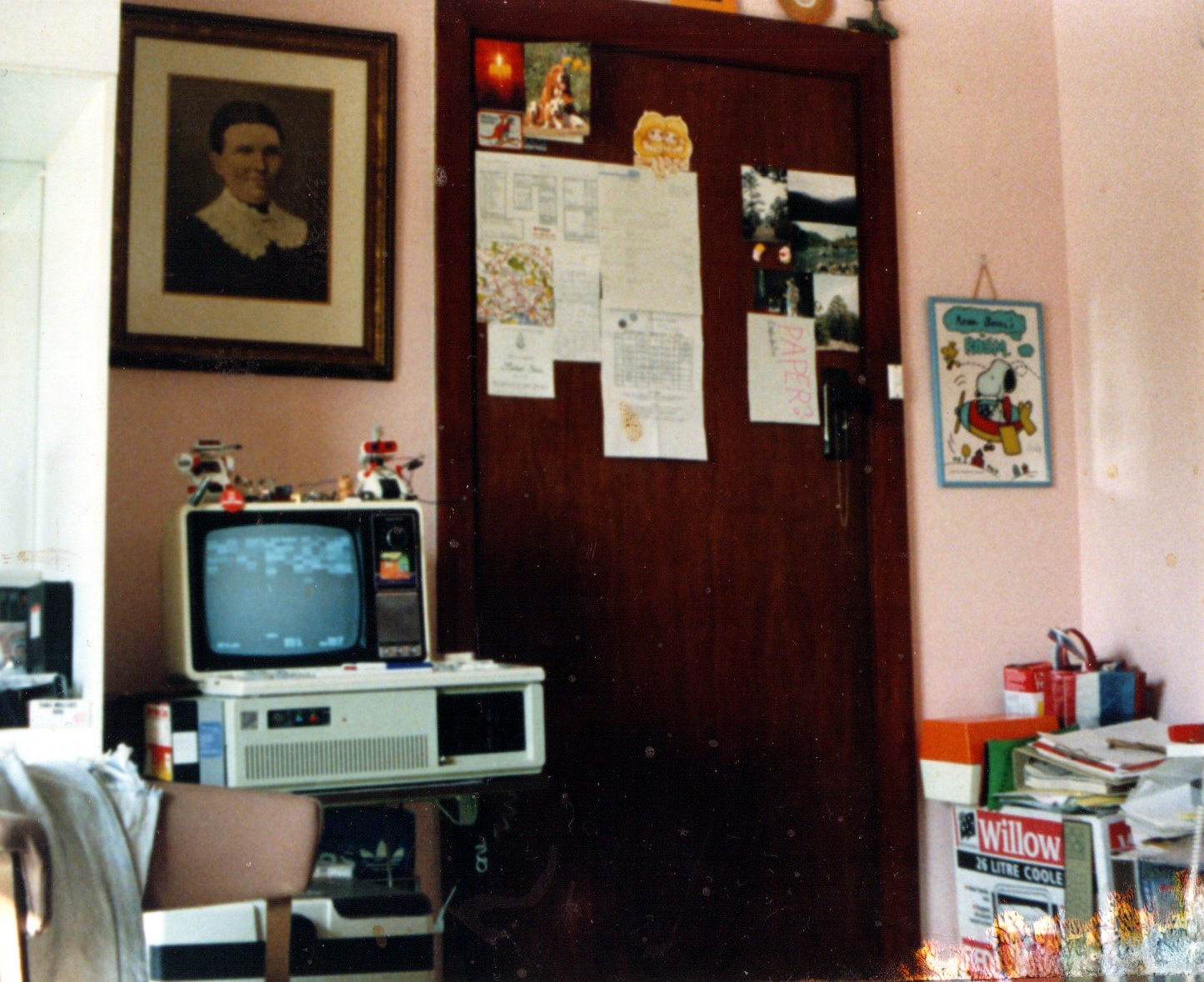“The two models, the 30TB … and the 32TB …, each offer a minimum of 3TB per disk”. Well, yes, I would hope something advertised as being 30TB would offer at least 3TB. Am I misreading this sentence somehow?
They probably mean the hard drive has 10 platters, each containing at least 3TB.
Everybody taking shit about Seagate here. Meanwhile I’ve never had a hard drive die on me. Eventually the capacity just became too little to keep around and I got bigger ones.
Oldest I’m using right now is a decade old, Seagate. Actually, all the HDDs are Seagate. The SSDs are Samsung. Granted, my OS is on an SSD, as well as my most used things, so the HDDs don’t actually get hit all that much.
I had 3 drives from seagate (including 1 enterprise) that died or got file-corruption issues when I gave up and switched to SSDs entirely…
Seagate had some bad luck with their 3TB drives about 15 years ago now if memory serves me correctly.
Since then Western Digital (the only other remaining HDD manufacturer) pulled some shenanigans with not correctly labeling different technologies in use on their NAS drives that directly impacted their practicality and performance in NAS applications (the performance issues were particularly agregious when used in a zfs pool)
So basically pick your poison. Hard to predict which of the duopoly will do something unworthy of trusting your data upon, so uh…check your backups I guess?
Had good impressions and experiences with Toshiba drives. Chugged along quiet nicely.
Ah I thought I had remembered their hard drive division being aquired but I was wrong! Per Wikipedia:
At least 218 companies have manufactured hard disk drives (HDDs) since 1956. Most of that industry has vanished through bankruptcy or mergers and acquisitions. None of the first several entrants (including IBM, who invented the HDD) continue in the industry today. Only three manufacturers have survived—Seagate, Toshiba and Western Digital
Yeah our file server has 17 Toshiba drives in the 10/14 TiB sizes ranging from 2-4 years of power-on age and zero failures so far (touch wood).
Of our 6 Seagate drives (10 TiB), 3 of them died in the 2-4 year age range, but one is still alive 6 years later.
We’re in Japan and Toshiba is by far the cheapest here (and have the best support - they have advance replacement on regular NAS drives whereas Seagate takes 2 weeks replacement to ship to and from a support center in China!) so we’ll continue buying them.
That decade old one is 3TB. 😅
Unfortunately, I have about 10 dead 3TB drives sitting around in my closet. I took the sacrifice so you don’t have to :-)
Thanks. 👍
at least you have a bunch of nice coasters and cool magnets now.
I’ve had a Samsung SSD die on me, I’ve had many WD drives die on me (also the last drive I’ve had die was a WD drive), I’ve had many Seagate drives die on me.
Buy enough drives, have them for a long enough time, and they will die.
Yeah, same. I switched to seagate after 3 WD drives failed in less then 3 years. Never had problems since.
It never ceases to amaze me how far we can still take a piece of technology that was invented in the 50s.
Solid state is kinda like a microscopic punch card.
More like microscopic fidget bubble poppers.

When the computer wants a bit to be a 1, it pops it down. When it wants it to be a 0, it pops it up.
If it were like a punch card, it couldn’t be rewritten as writing to it would permanently damage the disc. A CD-RW is basically a microscopic punch card though, because the laser actually burns away material to write the data to the CD.
They work through electron tunneling through a semiconductor, so something does go through them like an old punch card reader
Current ones also store multiple charge levels per cell, so they’re no longer one bit each. They have multiple levels of “punch” for what used to just be one bit.
So are optical discs
Much more so than solid state.
This isn’t unique to computing.
Just about all of the products and technology we see are the results of generations of innovations and improvements.
Look at the automobile, for example. It’s really shaped my view of the significance of new industries; we could be stuck with them for the rest of human history.
Talking about steam, steam-powered things are 2 thousand years old at least and we still use the technology when we crack atoms to make energy.
What the Romans had wasn’t comparable with an industrial steam engine. The working principle of steam pushing against a cylinder was similar, but they lacked the tools and metallurgy to build a steam cauldron that could be pressurized, so their steam engine could only do parlor tricks like opening a temple door once, and not perform real continuous work.
That’s how most technology is:
- combustion engines - early 1900s, earlier if you count steam engines
- missiles - 13th century China, gunpowder was much earlier
- wind energy - windmills appeared in the 9th century, potentially as early as the 4th
Almost everything we have today is due to incremental improvements from something much older.
Just a reminder: These massive drives are really more a “budget” version of a proper tape backup system. The fundamental physics of a spinning disc mean that these aren’t a good solution for rapid seeking of specific sectors to read and write and so forth.
So a decent choice for the big machine you backup all your VMs to in a corporate environment. Not a great solution for all the anime you totally legally obtained on Yahoo.
Not sure if the general advice has changed, but you are still looking for a sweet spot in the 8-12 TB range for a home NAS where you expect to regularly access and update a large number of small files rather than a few massive ones.
So I’m guessing you don’t really know what you’re talking about.
The fundamental physics of a spinning disc mean that these aren’t a good solution for rapid seeking of specific sectors to read and write and so forth.
It’s no ssd but is no slower than any other 12TB drive. It’s not shingled but HAMR. The sectors are closer together so it has even better seeking speed than a regular 12TB drive.
Not a great solution for all the anime you totally legally obtained on Yahoo.
???
It’s absolutely perfect for that. Even if it was shingled tech, that only slows write speeds. Unless you are editing your own video, write seek times are irrelevant. For media playback use only consistent read speed matters. Not even read seek matters except in extreme conditions like comparing tape seek to drive seek. You cannot measure 10 ms difference between clicking a video and it starting to play because of all the other delays caused by media streaming over a network.
But that’s not even relevant because these have faster read seeking than older drives because sectors are closer together.
Oh hey, I did something right. That’s kinda neat
I am troubled in my heart. I would not have been told so in this way.
HDD read rates are way faster than media playback rates, and seek times are just about irrelevant in that use case. Spinning rust is fine for media storage. It’s boot drives, VM/container storage, etc, that you would want to have on an SSD instead of the big HDD.
I’m real curious why you say that. I’ve been designing systems with high IOPS data center application requirements for decades so I know enterprise storage pretty well. These drives would cause zero issues for anyone storing and watching their media collection with them.
honestly curious, why the hell was this downvoted? I work in this space and I thought this was still the generally accepted advice?
Because everything he said was wrong?
Because people are thinking through specific niche use cases coupled with “Well it works for me and I never do anything ‘wrong’”.
I’ll definitely admit that I made the mistake of trying to have a bit of fun when talking about something that triggers the dunning kruger effect. But people SHOULD be aware of how different use patterns impacts performance, how that performance impacts users, and generally how different use patterns impact wear and tear of the drive.
Come on man, everything, and mean everything you said is wrong.
Budget tape backup?
No, you can’t even begin to compare drives to tape. They’re completely different use cases. A hard drive can contain a backup but it’s not physically robust to be unplugged, rotated off site , and put into long term storage like tape. You might as well say a Honda Accord is a budget Semi tractor trailer.
Then you specifically called out personal downloads of anime as a bad use case. That’s absolutely wrong in all cases.
It is absurd to imply that everyone else except for you is less knowledgeable and using a niche case except you.
Not a great solution for all the anime you totally legally obtained on Yahoo.
Mainly because of that. Spinning rust drives are perfect for large media libraries.
There isn’t a hard drive made in the last 15 years that couldn’t handle watching media files. Even the SMR crap the manufacturers introduced a while back could do that without issue. For 4k video you’re going to see average transfer speeds of 50MB/s and peak in the low 100MB/s range, and that’s for high quality videos. Write speed is irrelevant for media consumption, and unless your hard drive is ridiculously fragmented, seek speed is also irrelevant. Even an old 5400 RPM SATA drive is going to be able to handle that load 99.99% of the time. And anything lower than 4K video is a slam dunk.
Everything I just said goes right out the window for a multi-user system that’s streaming multiple media files concurrently, but the vast majority of people never need to worry about that.
Not sure what you’re going on about here. Even these discs have plenty of performance for read/wrote ops for rarely written data like media. They have the same ability to be used by error checking filesystems like zfs or btrfs, and can be used in raid arrays, which add redundancy for disc failure.
The only negatives of large drives in home media arrays is the cost, slightly higher idle power usage, and the resilvering time on replacing a bad disc in an array. Your 8-12TB recommendation already has most of these negatives. Adding more space per disc is just scaling them linearly.
Additionally, most media is read in a contiguous scan. Streaming media is very much not random access.
Your typical access pattern is going to be seeking to a chunk, reading a few megabytes of data in a row for the streaming application to buffer, and then moving on. The ~10ms of access time at the start are next to irrelevant. Particularly when you consider that the OS has likely observed that you have unutilized RAM and loads the entire file into the memory cache to bypass the hard drive entirely.
Just one would be a great backup, but I’m not ready to run a server with 30TB drives.
I’m here for it. The 8 disc server is normally a great form factor for size, data density and redundancy with raid6/raidz2.
This would net around 180TB in that form factor. Thats would go a long way for a long while.
I dunno if you would want to run raidz2 with disks this large. The resilver times would be absolutely bazonkers, I think. I have 24 TB drives in my server and run mirrored vdevs because the chances of one of those drives failing during a raidz2 resilver is just too high. I can’t imagine what it’d be like with 30 TB disks.
A few years ago I had a 12 disk RAID6 array and the power distributor (the bit between the redundant PSUs and the rest of the system) went and took 5 drives with them, lost everything on there. Backup is absolutely essential but if you can’t do that for some reason at least use RAID1 where you only lose part of your data if you lose more than 2 drives.
Is RAID2 ever the right choice? Honestly, I don’t touch anything outside of 0, 1, 5, 6, and 10.
Edit: missed the z, my bad. Raidz2 is fine.
raidz2 is analogous to RAID 6. It’s just the ZFS term for double parity redundancy.
Yeah I agree. I just got 20tb in mine. Decided to just z2, which in my case should be fine. But was contemplating the same thing. Going to have to start doing z2 with 3 drives in each vdev lol.
These things are unreliable, I had 3 seagate HDDs in a row fail on me. Never had an issue with SSDs and never looked back.
well until you need capacity why not use an SSD. It’s basically mandatory for the operating system drive too
deleted by creator
I would rather not buy so large SSDs. for most stuff the performance advantage is useless while the price is much larger, and my impression is still that such large SSDs have a shorter lifespan (regarding how many writes will it take to break down). recovering data fron a failing HDD is also easier: SSDs just turn read-only or completely fail at one point, in the latter case often even data recovery companies being unable to recover anything, while HDDs will often give signs that a good monitoring software can detect weeks or months before, so that you know to be more cautious with it
deleted by creator
Seagate in general are unreliable in my own anecdotal experience. Every Seagate I’ve owned has died in less than five years. I couldn’t give you an estimate on the average failure age of my WD drives because it never happened before they were retired due to obsolescence. It was over a decade regularly though.
Great, can’t wait to afford one in 2050.
Fleebay? Yup, me too!
$4.99 for the drive plus $399.00 s&h
This is for cold and archival storage right?
I couldn’t imagine seek times on any disk that large. Or rebuild times…yikes.
Definitely not for either of those. Can get way better density from magnetic tape.
They say they got the increased capacity by increasing storage density, so the head shouldn’t have to move much further to read data.
You’ll get further putting a cache drive in front of your HDD regardless, so it’s vaguely moot.
For a full 32GB at the max sustained speed(275MB/s), 32ish hours to transfer a full amount, 36 if you assume 250MB/s the whole run. Probably optimistic. CPU overhead could slow that down in a rebuild. That said in a RAID5 of 5 disks, that is a transfer speed of about 1GB/s if you assume not getting close to the max transfer rate. For a small business or home NAS that would be plenty unless you are running greater than 10GiBit ethernet.
up your block size bro 💪 get them plates stacking 128KB+ a write and watch your throughput gains max out 🏋️ all the ladies will be like🙋♀️. Especially if you get those reps sequentially it’s like hitting the juice 💉 for your transfer speeds.
This is my favorite post ever.
Random access times are probably similar to smaller drives but writing the whole drive is going to be slow
How many platters?!
30 to 32 platters. You can write a file on the edge and watch it as it speeds back to the future!
radarr goes brrrrrr
barrrr?
…dum tss!
sonarr goes brrrrrr…
Good. However, 2 x 16TB Seagate HDDs still cheaper, isn’t it?
These drives aren’t for people who care how much they cost, they’re for people who have a server with 16 drive bays and need to double the amount of storage they had in them.
(Enterprise gear is neat: it doesn’t matter what it costs, someone will pay whatever you ask because someone somewhere desperately needs to replace 16tb drives with 32tb ones.)
In addition to needing to fit it into the gear you have on hand, you may also have limitations in rack space (the data center you’re in may literally be full), or your power budget.
Lmao the HDD in the first machine I built in the mid 90s was 1.2GB
Our first computer was a Macintosh Classic with a 40 MB SCSI hard disk. My first “own” computer had a 120 MB drive.
I keep typoing TB as GB when talking about these huge drives, it’s just so weird how these massive capacities are just normal!
We had family computers first, I can’t recall original specs but I think my mother added in a 384MB drive to the 486 desktop before buying a win98se prebuilt with a 2GB drive. I remember my uncle calling that Pentium II 350MHZ, 64MB SDRAM, Rage 2 Pro Turbo AGP tower “a NASA computer” haha.
My dad had a 286 with a 40MB hard drive in it. When it spun up it sounded like a plane taking off.
My 286er had 2MB RAM and no hard drive, just two 5.25" floppy drives. One to boot the OS from, the other for storage and software.
I upgrade it to 4 MB RAM and bought a 20 MB hard drive, moved EVERY piece of software I had onto it, and it was like 20% full. I sincerely thought that should last forever.
Today I casually send my wife a 10 sec video from the supermarket to choose which yoghurt she wants and that takes up about 25 MB.
I had 128KB of RAM and I loaded my games from tape. And most of those only used 48KB of it.
Yeah we still had an old 8086 with tape drive and all from my dad’s university times around, but I never acutely used that one.
It really was doubling in speed about every 18 months.
Back then that was very impressive!
Yup. My grandpa had 10 MB in his DOS machine back then.
I had a 20mb hard drive
I had a 1gb hard drive that weighed like 20 kgs, some 40 odd pounds
deleted by creator
My first HDD had a capacity of 42MB. Still a short way to go until factor 10⁶.
My first one was a Seagate ST-238R. 32 MB of pure storage, baby. For some reason I thought we still needed the two disk drives as well, but I don’t remember why.
“Oh what a mess we weave when we amiss interleave!”
We’d set the interleave to, say, 4:1 (four revolutions to read all data in a track, IIRC), because the hard drive was too fast for the CPU to deal with the data… ha.
My first HD was a 20mb mfm drive :). Be right back, need some “just for men” for my beard (kidding, I’m proud of it).
So was mine, but the controller thought it was 10mb so had to load a device driver to access the full size.
Was fine until a friend defragged it and the driver moved out of the first 10mb. Thereafter had to keep a 360kb 5¼" drive to boot from.
That was in an XT.
Was fine until a friend defragged it and the driver moved out of the first 10mb
Oh noooo 😭
it honestly could have been a 10mb, I don’t even remember. only thing I really do remember is thinking it was interesting how it used the floppy and second cable, and how the sound it made was used in every 90’s and early 2000’s tv and movie show as generic computer noise :)
You have me beat on the XT, mine was a 286, although it did replace an Apple 2e (granted both were aquired several years after they were already considered junk in the 386 era).
I remember the sound. Also, it was on a three wheel table, and the whole thing would shake when defragging.

How can someone without programming skills make a cloud server at home for cheap?
Lemmy’s Spoiler Doesn’t Make Sense
(Like connected to WiFi and that’s it)
Raspberry Pi or an old office PC are the usual methods. It’s not so much programming as Linux sysadmin skills.
Beyond that, you might consider OwnCloud for an app-like experience, or just Samba if all you want is local network files.
I run docker services and host virtual machines from Unraid OS
The $0 home server:
Debian, virtualmin, podman with cockpit
Yes. You’ll have to learn some new things regardless, but you don’t need to know how to program.
What are you hoping to make happen?
Cheapest is probably a Raspberry Pi with a USB external drive. Look up “Raspberry Pi NAS,” there are a bunch of guides.
Or you can repurpose an old PC, install some NAS distro, and then configure.
There are a ton of options, very few of which require any programming.
The easiest way is NextCloud.
Not programming skills, but sysadmin skills.
Buy a used server on EBay (companies often sell their old servers for cheap when they upgrade). Buy a bunch of HDDs. Install Linux and set up the HDDs in a ZFS pool.
Or install TruNAS and chill.
I went with Linux and BTRFS because I just need a mirror. Lots of options and even more guides.





















